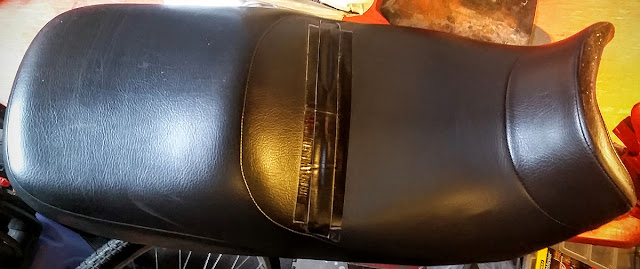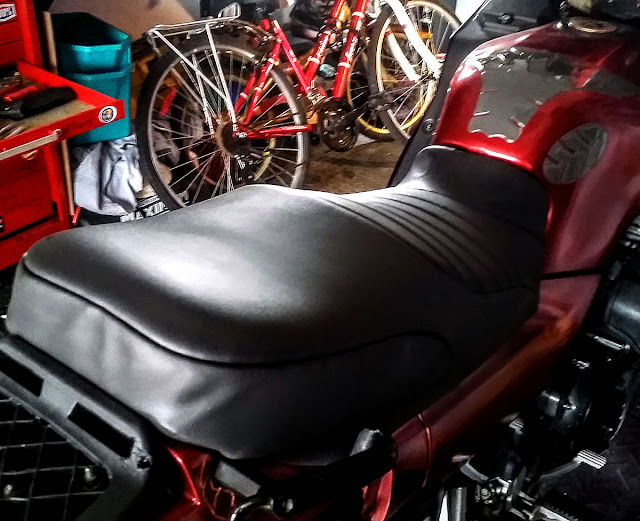I’m being held hostage by an authoritarian government. These fascists (they certainly don’t believe in democracy) have demanded that I surrender my rights and work under their terms. In this impossible environment the people who speak for me have begun a legal battle on this government’s attack on my fundamental Charter freedoms. The process of overturning that legislation will take time, but it will eventually be overturned and will result in the end of this nasty, self-serving government and their illegal legislation.
My rep has also tried to bargain a deal to protect me in the meantime. The bargain was made with a Bill 115 Magnum aimed at our heads, so a fair deal wasn’t exactly the result of the process.
There was no negotiation, it was more like begging for our lives. This government was happy to turn the public against us in order to further their agenda.
If you’re held hostage you look for the basics, you don’t start asking for more than you had. It’s a moment of desperation.
If we don’t take the deal our rep has scraped together for us, this authoritarian regime will put us in an even worse situation because it has legislated our rights away. In either case we will no longer have anything like we had. We either lose a lot and keep a bit because our rep got some concessions out of the regime, or we end up in their even worse MoU prison, either way, we lose.
When someone has a gun to your head, do you start moralizing with them?
So do we vote for a contract that strips us of years of concessions because this government would rather flush money down poorly managed ehealth experiments, semi-privatized air ambulances, quarrelsomeness wind power and on again/off again power plants, or do we go to the wall and burn it all down because this is just wrong?
If we don’t vote for this, something even worse is imposed on us anyway. This is divisive no matter how you play it. Junior teachers lose their grid increases, senior teachers (who are the majority) don’t lose their retirement sick-day payouts. Some boards may OK this, others may not. This isn’t going to create labour peace, it’s going to create an uneven mess across the province.
In the meantime that fight to overturn the regime continues. In a year and a half, we could very well be standing over the ruins of Bill115 (and the Ontario Liberal dream of being the government) and be able to bargain a fair deal under Canadian law; we can’t do that right now. Whether we vote for this or not, our agreements will be in tatters because the Ontario Liberals and their Tea-party-Hudak lapdogs have pushed through this ridiculous, undemocratic legislation.
Do you go along with what you know is wrong hoping to protect you and your family as best you can or do you say, “NO, this is wrong, I will not be a party to it”? This isn’t an easy decision.
The lack of clarity, both moral and professional in this makes this a very uncertain, difficult decision to make. Unfortunately I’m a bloody minded kind of fellow; I fear I’ll vote for what’s right, whatever the cost, politics be damned.
PRIVATE TEACHER, PUBLIC JOB
The Seat of my Bike
After the ride to Indy I have a much stronger opinion about the Concours’ stock seat. It’s soft and comfy on short rides, but on long rides it turns into a kind of torture device. There are options for Concours seats that I can’t justify on an $800 bike, but the cheaper option arrived, so yesterday during the rain I gave it a go.
 |
| It’s tedious, but loosening the staples with a screwdriver makes for clean removal with needle nose pliers. |
The process took about an hour and a half to swap out the seat cover. The seat fabric is held down by industrial staples. I loosened them with a small flat-head screwdriver and then pulled them out with needle nose pliers. It’s time consuming because there are a couple of hundred of them holding the seat to the plastic base.
 The cover peeled off relatively easy, only sticking where the Gorilla tape I’d used on the torn seam was touching the foam (that stuff is mega).
The cover peeled off relatively easy, only sticking where the Gorilla tape I’d used on the torn seam was touching the foam (that stuff is mega).
With the foam exposed I tried fitting the new seat skin and found that it had much more extra material on it. I was looking to firm up the seat a bit any way, so I took the gel pad I got on the Indy trip and found it would fit under the new cover. It would also raise the seat slightly, which would do my knees some favours.
Attaching a new seat cover is a tricky business. The vast majority of swearing happened while doing this. Rotating the seat so you can put weight on the staple as you squeeze the handle of the stapler helps seat it properly, but it’s a pretty muscley process. Getting the edges tight requires some practice. This one came pretty close, but future ones I’ll be pickier about and get even snugger.
In the meantime I’ve got a seat that feels firmer, sits a touch higher and isn’t covered in tape. I think the end result looks pretty good, and for thirty bucks plus shipping, it’s a good cheap alternative to those sweet Corbin seats.
I found this seat cover maker on ebay. The seat arrived quickly and is as advertised. I can’t speak for its toughness yet, but installing it I found that it was made of thick vinyl and the sewing was very strong. It’s a cool sunny day today, I’m going to give it a whirl and see how it does.
 |
| The stock seat tore on the stitching, Gorilla tape did the business until I could find a better solution. |
Sense of Accomplishment!
 |
| It’s alive…. ALIVE!!! |
After fiddling with the speedometer gear housing I was told to make sure I have the line on the back of the suspension and the housing lined up. I put it back together that way and still didn’t get anything, so I took it apart again and tried putting it on 180° from before and bingo, the speedo began to spin. If you’re having trouble with speedo gear housings, try putting it on the other way and turning it to line up with the fork housing mark.
 |
| Love that red – the Connie will be getting panels refinished over the cold months… |
All the gauges on the Connie work now, so I’m going to begin to reassemble it after changing out the oil and filter. I’m hoping to have it back together in the next week or so and then I can take an honest run at a safety and see how it does. Everything else seems to be in good form. It starts at a touch of the button and idles steadily after a moment on choke. The throttle is clear, sharp and very responsive now. The
brakes feel strong and sure. After reassembly and a final cleanup, hopefully it’ll fly through safety and then I’ll have to make some hard decisions about the Ninja.
It would be nice to get some miles on the Connie before the snows fall.
 |
| New speedo cable runs in behind the bottom of the front shock from the right. It reads accurately and runs quietly. |
 |
| Hard not to love that big one litre engine… it burst to life with a growl and revs with surprising eagerness. Smooth as butter too… |
 |
| Everything comes to life and reads accurately now… |
The Tyranny of Paper
Tiger Pre-Flight Checks
I’ve never monkeyed with the suspension on the Tiger, but since I’m a 250lber and I ride 2-up with my son who’s an easy 130lbs, I thought I’d look into setting the suspension before our 1500km round-Huron trip.
A kindly Dubliner on Triumphrat had a copy of the owner’s manual page that explains how to set the Tiger’s rear suspension. A two-up loaded bike should be spring pre-load set to the highest setting (5), while the rebound damping should be set three clicks out from all the way in.
Making the changes was pretty straightforward. The spring pre-load adjuster is easily accessible under the seat. The numbers on it are bit tricky to see, but you can quickly set the pre-load to the desired setting once you find them at the bottom of the cylinder.
The rebound damping adjuster is at the bottom of the shock and easily accessible. Turning it in until it was snug was straight forward and the clicks are loud and easily detectable. Turning it out three clicks was an obvious process.
I took the bike for a ride today to get gas and prep for the trip. It feels firmer, less bouncy and taller than before. I’m enjoying the change.Once back I set the tyre pressures to 36psi front and 42psi back and looked over the tires for any issues. I’ve spent the rest of the day packing as if for a portage canoe trip (packing for a long bike ride is similar).
While out and about I stopped in at Two Wheel Motorsport and picked up an Airhawk. I’d been thinking about getting one anyway after the nasty case of monkey-butt I got riding it to The Bruce last week. The gel pad I was using gets moved to the pillion seat, so everyone gets a seat upgrade.Airhawk pricing is a bit baffling. The tiny dual-sport seat (11.5″ deep x11″ wide) cost $230, the much larger medium cruiser seat pad (14″ x 14″) costs $148. We tried out the medium cruiser sized one and it fit the Tiger seat better anyway, so I saved myself eighty bucks and purchased the larger pad. (?) I’ll give an update after I put an intensive 1500kms in unbelievable heat on it.
While I was under the seat I found the height settings on it, so I moved it up one from minimum. It might quickly find its way to the top setting, but middle with the Airhawk has already relaxed my knees dramatically, just in time for a Great Lake ride-around.
Appliances & Commitment
| Car companies use special effects to show what their cars can’t do. This only underlines the absurdity of it all |
I’m having trouble enjoying car ads. I’ve always loved cars since I was a kid, but when I’m watching ads that show driving a car on the road as some kind of noble physical pursuit I’m finding them impossible to take seriously. When you factor in the increasing use of special effects to show what the car being sold can’t do, it only serves to underline how absurd it is to market the idea of car as a physical extension of the self. In addition to being dishonest, it isn’t how and why the vast majority of people drive.
More than most cars, the Acura RLX can make a claim to be a driver’s car. The end tag line about how amazing things can happen when man and machine connect is where this is beginning to break down for me. How connected can you possible be to an automatic, climate controlled machine that weighs two tons? It isn’t what you could call an intimate relationship.
GM seems to have gone all in with the special effects. Their econo-box is a skateboard, robot dogs abound, and the new Corvette can help you battle aliens. The use of special effects to show what a car can’t do (but how it’s supposed to make you feel) is becoming a key part of marketing these transportation appliances.
At the bike course one of our instructors talked about how tiring it is to ride a bike, especially when you’re starting out. We were all sitting there sweaty and tired in the classroom after a couple of hours manhandling bikes around increasingly complicated courses. He asked us about our commute to the course that morning, what were we doing as we drove our cars? One hand on the wheel, a foot on the gas? Listening to the radio? All in a controlled environment remote from the road.
Now, he says, think about what you were just doing out there. One foot on the gear shift, one foot on the rear brake, left hand on the clutch and indicators, right hand on the front brake, both arms steering, using your whole body to lean the bike into corners and resist the wind. Riding is a calisthenic activity, and it demands much more of your attention because the result of inattention is never just a fender bender.
The only time I’ve come close to the same experience on four wheels was when I was cart racing in Japan or doing advanced driver training at Shannonville. Knowing how intense and demanding that kind of driving is helped me a lot in taking the bike course, but it’s not how most people will ever drive a car. To 99.9% of drivers a car is a transportation appliance, a necessary means of getting somewhere; it’s why everyone is so attentive and skilled on the road. You can try and market a person’s connection with their car in mystical undertones of human/machine perfection or simply paint it absurd with special effects, but the fact remains: the vast majority of automotive drivers are in it for the same reason that we buy any appliance: to get a job done we’d rather not do ourselves.
Having ridden for a couple of months now, I’m beginning to see why bike riders tend toward a sense of superiority when it comes to being on the road. Watching car companies go into graphic detail about how athletic you’ll be in your two ton box starts to look absurd when you consider how drab the process of driving a car on public roads actually is; it requires a bare minimum of commitment.
 One of the things that strikes me every time I get on the bike is how naked I feel. I’ve never looked at the surface of a road so closely, or been so aware of where the painted lines are, or of what the weather is doing, or what condition my bike is in. I think all riders feel this, even if they don’t articulate it. It’s one of the reasons they tend to give each other a wave as they pass by; they are recognizing the commitment to the road that is lacking in appliance drivers.
One of the things that strikes me every time I get on the bike is how naked I feel. I’ve never looked at the surface of a road so closely, or been so aware of where the painted lines are, or of what the weather is doing, or what condition my bike is in. I think all riders feel this, even if they don’t articulate it. It’s one of the reasons they tend to give each other a wave as they pass by; they are recognizing the commitment to the road that is lacking in appliance drivers.
This isn’t to say that driving can’t be athletic. I’m an avid Formula One fan and I think those drivers are some of the finest athletes in the world, a truly balanced blend of physical endurance, strength and intelligence. But on a public road there is only one form of driving that comes close to that level of commitment, dedication and focus, and it has never been on four wheels, no matter how exciting car companies want to dress up the operation of their appliances.
Anti-Edtech or Anti-Distraction?
Originally published on Dusty World way back in September of 2014:
Is technology in the classroom a distraction or a tool for improving learning? The results of vastly improved student learning from technology haven’t materialized, yet we continue to throw money at educational technology hoping that it will help.
A wise internet jedi recently shared an article in which a new media professor is putting an end to digital distraction in a class in which he teaches about digital distraction. A better person to explain the assumptions we make about digital technology you’d be hard pressed to find. He had a couple of quotes that really punched assumptions about edtech use in the face.
“Multi-taskers often think they are like gym rats, bulking up their ability to juggle tasks, when in fact they are like alcoholics, degrading their abilities through over-consumption.”
“Multi-tasking is cognitively exhausting; when we do it by choice, being asked to stop can come as a welcome change.”
The concept of multitasking has long been championed by the rise of the digital native crowd. It’s something we poor immigrants to this brave new world simply can’t do like they can, except it isn’t. If you want to follow the science rather than the marketing, you’ll find that multi-tasking is indeed a myth. If you want to do something well, you focus on it. That might seem like simple common sense, but you’ll find a lot of digital education evangelists pushing for it anyway.
 For the Luddites that want to attack computers themselves for this dilemma, he had this:
For the Luddites that want to attack computers themselves for this dilemma, he had this:
“programming, a famously arduous cognitive task, will acquaint you with stories of people falling into code-flow so deep they lose track of time, forgetting to eat or sleep. Computers are not inherent sources of distraction — they can in fact be powerful engines of focus — but latter-day versions have been designed to be, because attention is the substance which makes the whole consumer internet go.”
As a philosophically minded technologist I straddle this uneasy divide between the tech-hater and the fan-boy/girl, and I like neither. Where I see computer technology as a tool to use, many others either vilify or champion it from an emotional angle. I struggle mightily in class to get students to stop this emotional love/hate relationship with computers that many model on the adults in their lives, but it’s a simple truth when Shirky says our computers are now designed to be distractions. If you’re only going to be a user, you’re going to be a loser.
This infected thinking, the kind that has monetized the internet and made a generation of software engineers billionaires, demands constant human attention. When everything touched by technological integration gets infected with the idea of deep psychological engagement, people in the world become little more than variables in an economic equation.
Learning Without A Safety Net
As a learner I tend to have problems following curriculum (I have trouble following it as a teacher too). For me, learning is a challenging, self-directed, non-linear activity. It’s a delight when you have that eureka moment and frustrating when you’re can’t grasp a concept because you don’t have enough context around it. I don’t want it to be easy, and I don’t want it to be fail-proof. Classes that are unfailable are pointless in my eyes; difficulties in learning are what make it empowering! Success shouldn’t be assured, if it is, you’ve sacrificed any real sense of accomplishment.
If a teacher, closely following set curriculum, spoon feeds me a lesson, I don’t feel that I’ve learned it, so much as learned the wrong thing (being told how to do it rather than figuring out how to do it). When students ask me to resolve a problem for them, I point them in the right direction, I don’t fix it for them. They aren’t in class to learn how to ask someone to correct their grammar, operate Adobe Flash or build a computer, they are in class to learn how to do these things for themselves. If they’re miles from figuring it out for themselves, I simply try and close that gap, but never take the last step, they need to do that themselves, or they won’t own their learning. To quote the mighty Morpheus, ” I’m trying to free your mind, Neo. But I can only show you the door. You’re the one that has to walk through it. ”
I set up my classrooms as research centres and each assignment as a project. The environment should quickly and easily provide the tools needed to learn in a hands-on way. Failures aren’t failures, the only way to fail is to do nothing (which an increasing number of students seem to be doing once they realize how hard it is to fail in the current system). I encourage experimentation, and the opportunities found in resolving your own misunderstandings. Most of all, I make it very clear that the only way to fail is to make no attempt. Once students are engaged, they inevitably find success in a supportive learning environment.
I did this in English and it often caused conflict with the force-feeders who feel that you’re not teaching unless you’re talking at the class. Those force-feeders are as often students as they are teachers; the expectation of most academic students are that the teacher will give you information, you’ll repeat it back, and see high grades. Giving them room to fail makes them very nervous. Seeing that the technology curriculum is actually based on this idea of broad based, project focused learning, I’m looking forward to teaching a subject built upon this open, student centred approach. I loved teaching art for the same reason; project based, hands-on learning with lots of time for me to work one on one with students as they develop tangible skills.
In a tightly restricted, curriculum based classroom, I feel like I’m trying to dance in a straight jacket (both as a teacher, and as a student). I’m not saying that there shouldn’t be some focus, but the moment you dictate the entire process of learning, you effectively kill any personal meaning or satisfaction in it.
Stop and take in the moment…
Last year I was stuck behind a large group of cruisers and wondered out loud on the Concours Owners Group what the etiquette is for passing them. It’s hard to pass a big group because of their shear size, and breaking up their formation by having to pull back in during a pass seems rude. In addition to upsetting several bikers (a word I don’t use to describe myself), I got some good advice from motorcyclists who have been doing it for a long time. The best advice came from a fellow who said that if he comes across a mobile chicane like that he just pulls over has a smoke and ponders things. He then gets back onto an empty road in a contemplative state of mind. Why so be in such a rush?
I liked his Zen approach though it isn’t in my nature to do it. The other day on my short commute into work I was riding behind an ancient Muppet in an SUV who was barely doing 40 in a 60 zone. He wasn’t going to work, but he’d elected to hop into his mobile castle and putter down the road in front of as many people as he could. With a bike your power to weight ratio is stratospheric. It’s (very) easy to make a pass, but rather than feed the speed monster I tried pulling over. It helped that it was an absolutely stunning October morning with golden sun streaming through ground fog…
I stopped, turned off the bike, and sat on the side of the road for a few minutes soaking it up. Once you drop the gotta-pass thing the urge quickly fades away. In the stillness of that sunrise I became aware of what was pushing me. Part of me was already thinking through all the things I had to do when I got to work and anxiety to get it all done was taking root without me noticing it, hence the urge to blow off traffic. Your subconscious can be a pain in the ass that way, infecting what was otherwise a beautiful morning ride in to work with an unnecessary sense of urgency. It’s nothing that a moment of reflection can’t beat back though. How often have you reacted to stress or pressure by passing it on to something else? I transfer moods like this all the time.
I took a couple of more minutes and photographed the sunrise…
Back on the bike I continued in to work, getting there five minutes later than I otherwise would have but in a mellow state of mind. I actually caught up with the Muppet and his train of frustrated commuters in the next town over, so my five minute sojourn with the rising sun didn’t make me any later than I would have been anyway.
This Zen break was easy because nature was putting on a show, but it’s a habit I’d like to try and get into. Nurturing a calmer mindset results in deeper thoughts, and time to ruminate is one of the reasons I love riding a motorcycle so much. The time to reflect doesn’t hurt either. If I can sense when worldly pressures are infecting my mindset on the bike I’ll become a better rider.
Which Digital Overlord Do you Bow To?
I’m pretty handy when it comes to technology, but the past week has really underlined for me just how proprietary digital technology has become. In the past seven days I’ve had to root my phone and I’m still struggling to free the magazines I have purchased from the clutches of Apple.
With content so closely tied to software delivery, and more and more of that software delivery being locked to specific hardware, you seemingly have to accept the fact that you don’t own anything you legally download from the internet without also accepting that the only way to view it is through a multinational’s proprietary ecosystem.
I’m just over two years into a three year contract with Telus. Last year Samsung decided that my Galaxy Note2 wasn’t allowed to update the Google Android operating system that runs on it. I normally wouldn’t care, but Google Play keeps updating the apps I have on the phone, eventually making a number of them incompatible with my stale version of Android.
Why would Samsung do this? It’s been two years, it’s time to force me into an upgrade to a new phone. This wouldn’t be an issue in most markets where telecoms can’t bully customers, but it’s only recently that Canada decided to join the rest of the first world in limiting its cellular carriers in terms of abusive contracts. Why would Telus shrug about my phone problems? Because they are selling me a new phone early, even while I’m still on a contract that was deemed unfair to consumers.
What’s left for the user? The hacker community, thankfully. After having a chat with my students (all of whom have hacked their phones), I found Jedi X and installed it on the Note2. Suddenly the phone is faster than it’s ever been, no stability issues at all, lots of extra features that I got to select, and best of all, I’m not forced to run any of the cruft that Telus and Samsung demand I run ‘under contract’.
I’m suddenly no longer the owner of a phone that bricks itself every two hours and needs the battery pulled to restart it. I’m also the owner of a Note2 that makes lightsaber noises whenever you take the stylus out (I can’t express how happy this makes me). Without the modding community I’d be stuck with a useless phone and paying my way out of a contract that wouldn’t be legal in most of the world, and isn’t legal any more in Canada.
So, with the phone hacked and sorted, I turned to Apple’s Newsstand. I’ve been using an ipad mini to read, but some magazines on the newsstand are locked to aspect ratio and zoom. Since they were designed for a regular ipad, they don’t present well on the mini. Fortunately, after much searching, I’ve found a tablet that I actually enjoy using. The Microsoft Surface is a tablet that also lets me snap a keyboard on and do work as a full Intel i5 laptop. I can even do photoshop and video editing on it! Its high resolution screen is comfortable for reading too.
 |
| Like my Microsoft iPad? It can also be a Microsoft Android tablet, or a linux PC, or, you know, a Windows PC. |
Should be no problem, right? Just install itunes and I’ll be able to access the content I paid for. Um, no. Apple locks that content to an i-device. You don’t own the magazine you paid for, it only exists when you’re looking at it through an Apple iOS screen. I don’t save money buying electronic subscriptions, each magazine costs me $3.99 instead of $6.99 for a paper copy, plus the price of an ipad.
As you might imagine, Apple doesn’t make an ipad emulator, but lots of other people have. A couple of downloads later (and a second OS install) and I’m in business, reading the content I paid for on the device of my choice. I can also boot the Surface into Android mode and view Google Apps on it. I’m sure this is breaking all kinds of Apple, Microsoft and Google legalese, which is really the point of this whole piece.
There was a time when digital technology was designed to empower users at all costs; the user wasn’t the first thing, they were the only thing. Users weren’t a data point to be mined, or consumer to be duped into committing to a closed ecosystem, they weren’t buried in legalese and they could expect hardware to run software without worrying about the brand on it.
In the earlier days of digital technology, before these digital giants (who are now synonymous with high-technology) turned this into a vicious game of one-upmanship capitalism, we could depend on digital tech to offer real improvements over the way we used to do things. Recently I’ve found myself instead wondering what the angle is every time I see a new digital delivery system.
The good news is most people aren’t bothered to learn ways around it and just keep feeding the giants money. For the few who are willing to learn and experiment, there are always work arounds.







